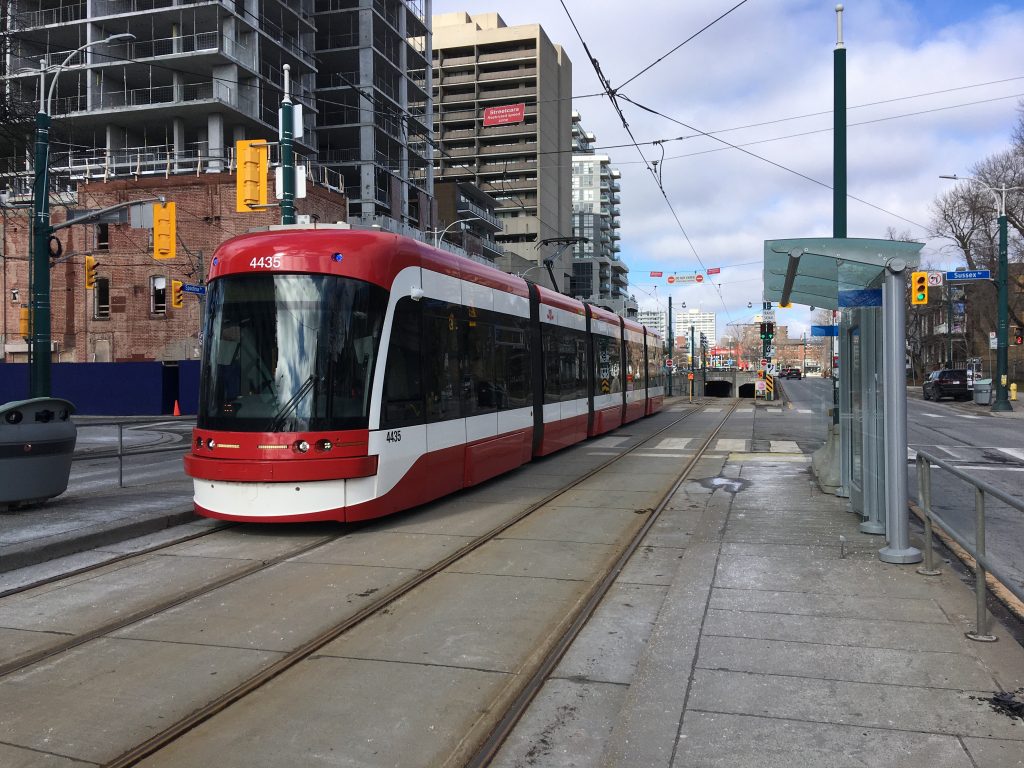Is police presence enough to curb the worrying trend of TTC violence?

Content warning: This article discusses violence, police violence, and anti-Black racism.
On Wednesday, January 25, around 7:30am, two Toronto Transit Commission (TTC) workers were chased by a person wielding a syringe near the intersection of Yonge Street and Dundas Street. Approximately seven hours later, a 16-year-old boy suffered serious injuries after being stabbed on a TTC bus at Old Mill subway station.
These occurrences are the most recent in a string of violent incidents on the TTC. In just the month of January, a woman suffered life-altering injuries after being stabbed multiple times on a Spadina Avenue streetcar in broad daylight; a group of teens shot a female TTC employee with a BB gun near Markham Road and Progress Avenue; and a man was pushed onto the subway tracks at Bloor-Yonge station.
2023 is not unique in this regard either; in fact, it is part of a larger trend of heightened levels of violence on the TTC network compared to pre-pandemic levels. Readers may recall the death of Vanessa Kurpiewska, who was fatally stabbed at High Park station or Nyima Dolma, who passed away after being set on fire onboard a TTC bus at Kipling station.
There is no rhyme or reason to the attacks: they have occurred in all parts of the city, at all times of the day, and on streetcars, buses, subways, and both inside and outside TTC stations. Naturally, this has left commuters feeling scared. While some people have looked for ways to protect themselves, others have opted for alternative methods of transportation at a time when the transit system is experiencing record-low ridership.
In response to the increased violence and its resultant unease amongst the public, the Toronto police have deployed 80 police officers across the TTC network daily to prevent crimes and enhance public safety.
Rick Leary, TTC CEO, concedes that while the TTC doesn’t know what is behind the recent increase in violence on the TTC network, the TTC understands the root causes are complex, systemic issues that “require longer-term solutions, and they will be at the table with these [to address] crime prevention, mental health and addiction and homelessness.”
Amalgamated Transit Union Canada national president, John Di Nino, said the violent incidents had reached “crisis” levels; he called for a national safety task force. John Tory, who resigned from his position as the Toronto Mayor on February 17, supported Di Nino’s request while emphasising that the deployment of additional police presence is needed at a time of anxiety. The City of Toronto has also announced the deployment of an additional 50 special constables across the TTC network.
While some people may view an increased police presence as a source of safety, it may propagate more unease, especially among members of racialized communities. A 2020 report by the Ontario Human Rights Commission (OHRC) entitled The Disparate Impact found that Black folks are more likely to be proactively arrested, charged, and subjected to uses of force in police interactions. The OHRC has expressed hesitance at past increases in police presence due to the concern that it may exacerbate racial profiling. Moreover, Diana Chan McNally, a harm reduction case manager at the non-profit All Saints Church, warned that people experiencing homelessness might become a target for the police, who may conflate violence on the TTC with individuals taking shelter in stations. The executive director of TTCriders, Shelagh Pizey-Allen, said the expansion of police presence on the TTC system is a “bandage solution” that doesn’t address the underlying issues of violence in Toronto. Similarly, public health experts and criminologists have called for an approach that addresses the root causes of violence, such as a lack of housing affordability, homelessness, and mental health support.
Commuting students have expressed concern about riding the TTC, especially those with no other alternative; Uber is prohibitively expensive while walking or biking may not be geographically feasible or possible considering Toronto’s ever-fluctuating weather patterns.
On January 31, the University of Toronto Provost Office sent out an email acknowledging that the news of violence may be distressing for U of T community members. The email also included links to public safety resources and tips from both the Community Safety Office and the TTC. While the Provost’s response provides valuable resources and tips, U of T can help students prioritise their safety by providing the option to attend evening classes virtually or making lecture recordings accessible.
Although the concerning levels of violence are a reflection of systemic issues that require broader organisational responses, there are several individual steps you can take to keep yourself safe. Items, such as pepper spray and knives, are illegal to carry around in Canada, but TTC riders may wish to carry other personal safety devices, such as portable alarms. The Request Stop program allows TTC travellers to get off the bus between regular TTC stops between the hours of 9pm and 5am. Stay aware of your surroundings by minimising distractions and looking around frequently.





